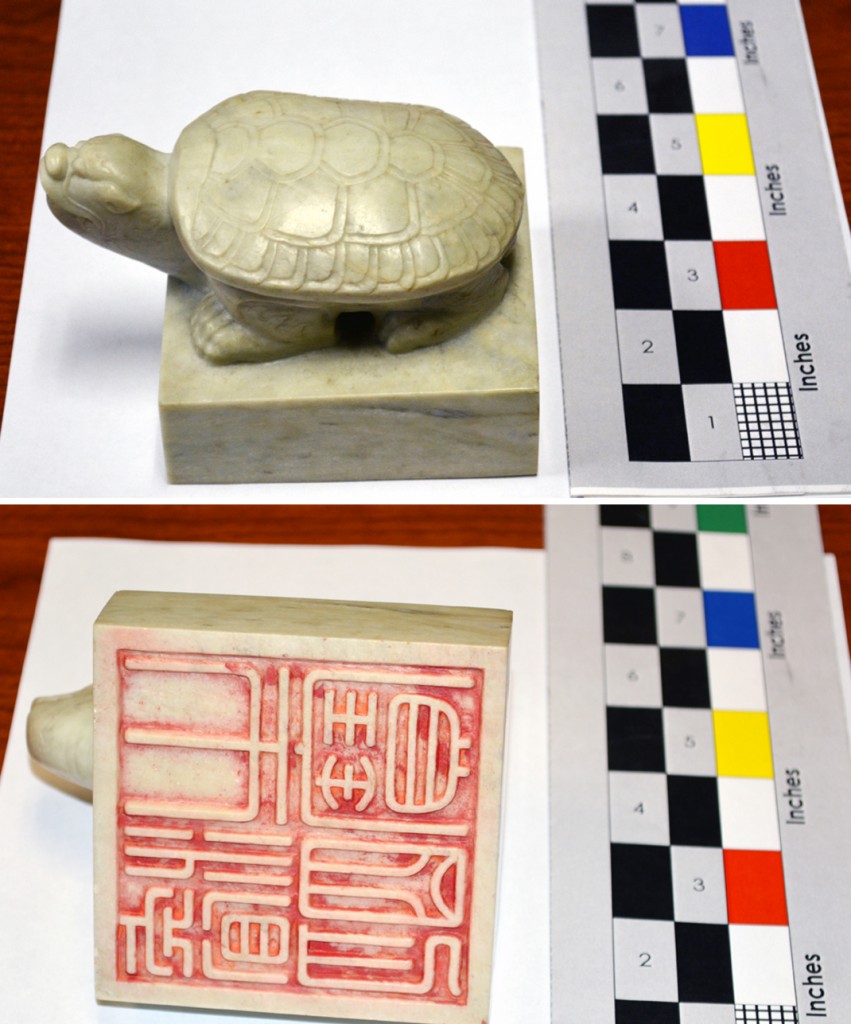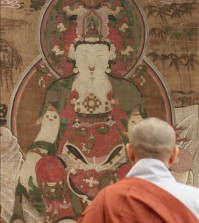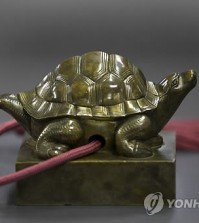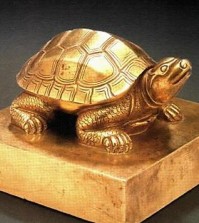- California Assembly OKs highest minimum wage in nation
- S. Korea unveils first graphic cigarette warnings
- US joins with South Korea, Japan in bid to deter North Korea
- LPGA golfer Chun In-gee finally back in action
- S. Korea won’t be top seed in final World Cup qualification round
- US men’s soccer misses 2nd straight Olympics
- US back on track in qualifying with 4-0 win over Guatemala
- High-intensity workout injuries spawn cottage industry
- CDC expands range of Zika mosquitoes into parts of Northeast
- Who knew? ‘The Walking Dead’ is helping families connect
Priceless ancient Korean seals seized in U.S.
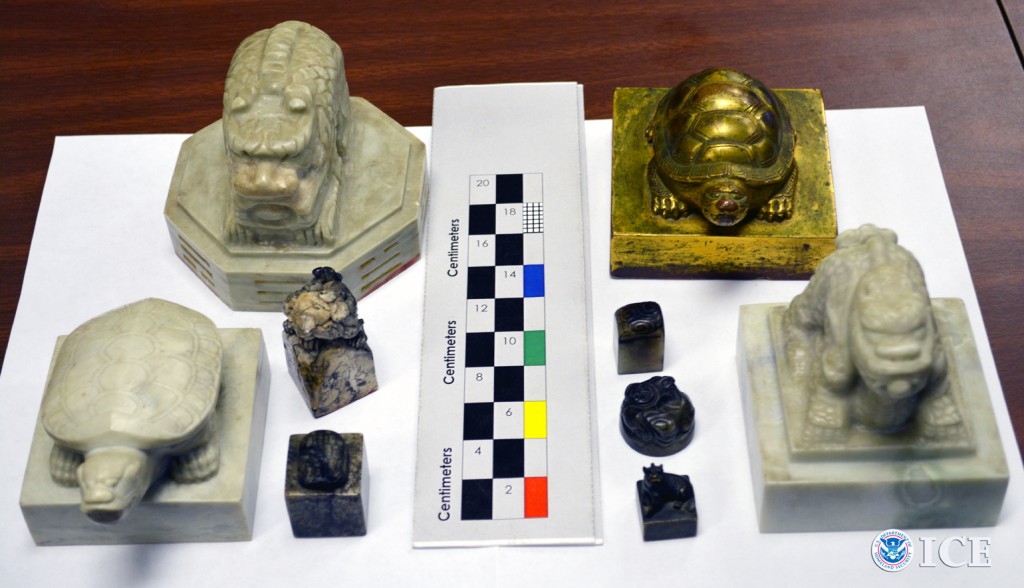
The nine seals include three national seals of the Korean Empire, one royal seal of the Korean Empire and five signets of the Joseon Royal Court of the Joseon Dynasty. The Korean Empire (1897-1910) succeeded the Joseon Dynasty (1392-1910). (ICE photo)
Nine seals of the Korean Empire and Joseon Dynasty were recovered in San Diego on Tuesday.
According to U.S. Immigration and Customs Enforcement’s (ICE) Homeland Security Investigations (HSI), the cultural artifacts were turned over to HSI special agents by the family of a deceased Marine lieutenant who had served in the Korean War. The lieutenant had found the seals in 1950 in a ditch near the Deoksugung Palace, which had just been ransacked by Chinese and North Korean soldiers.
Among the seized artifacts are two national seals of the Korean Empire and seven signets of the Joseon Royal Court of the Joseon Dynasty (1392-1910), according to the Cultural Heritage Administration in charge of the nation’s cultural assets.
The Korean Empire was the name given to the Joseon Dynasty during its final 13 years before it became a colony of Japan.
In particular, Hwangjejibo (Seal of the Emperor), the national seal made upon establishment of the Korean Empire in 1897, holds significant academic and historical value, as it symbolizes King Gojong’s will for independence.
“(The Seoul government) will work closely with Washington to ensure the return of unlawfully removed cultural properties by U.S. servicemen during the Korean War,” an official said.
The seals will be officially returned to the South Korean government sometime in June of next year after going through an official forfeiture process, which normally takes more than four months, the administration explained.
Back in September, a century-old currency printing plate was officially returned to the South Korean government as a result of multi-agency cooperative efforts between Seoul and Washington.
HSI says since 2007, more than 7,150 artifacts have been returned to 26 countries, including paintings from France, Germany, Poland and Austria, 15th to 18th century manuscripts from Italy and Peru, as well as cultural artifacts from China, Cambodia and Iraq.







